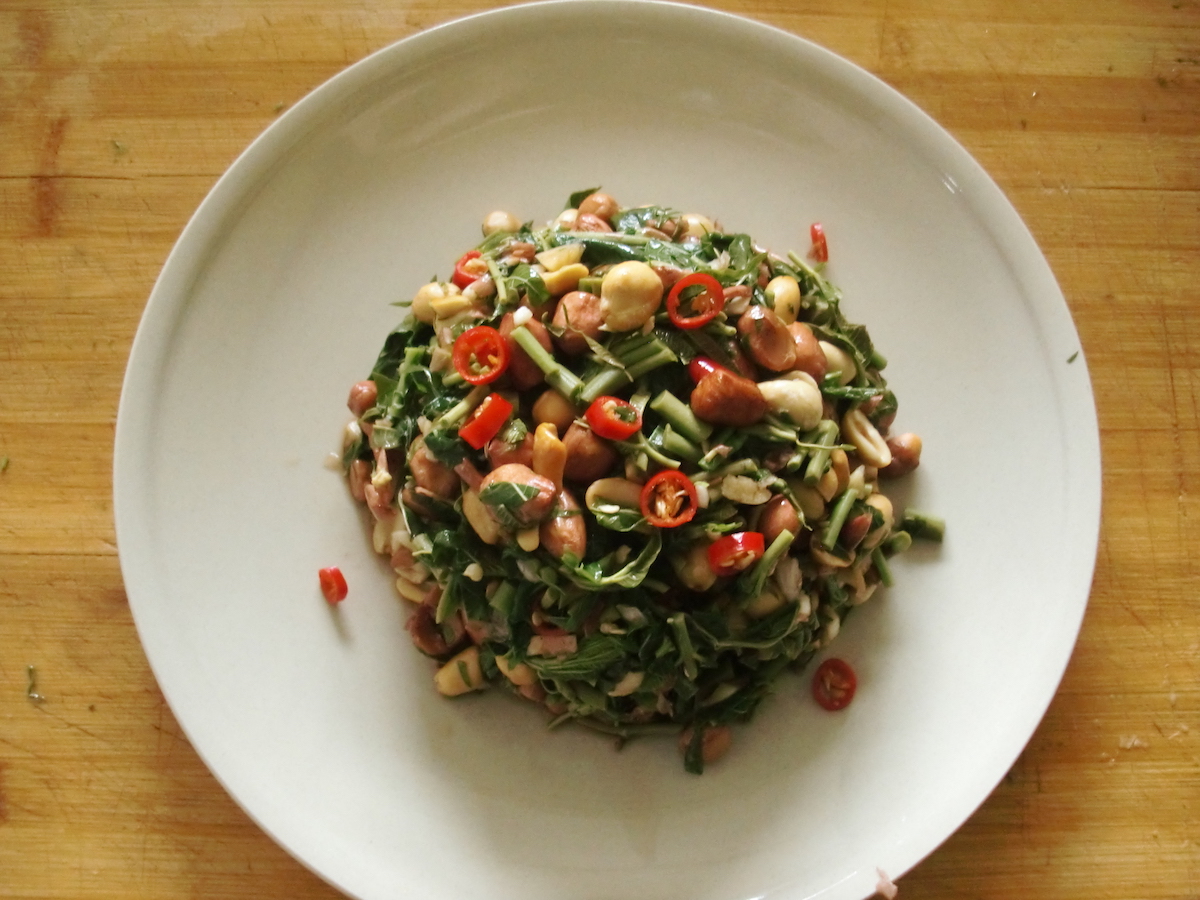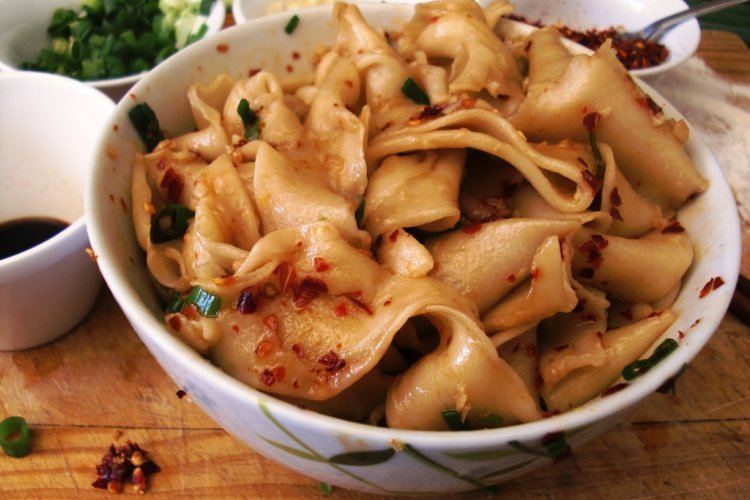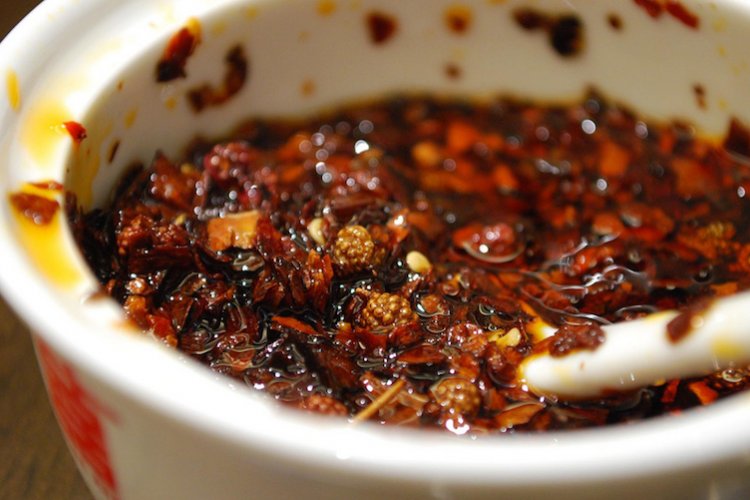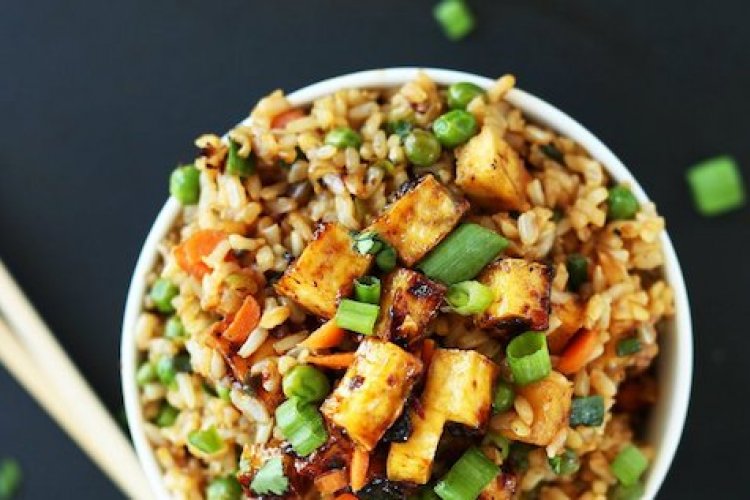Make the Most of Beijing's Seasonal Produce: A Fresh Take on Xiangchun and Peanut Salad
Spring has very decidedly sprung in Beijing, bringing with it a whole host of interesting vegetables denied to us throughout the winter months. To celebrate, we're taking a look at xiāngchūn (香椿), the little bunches of red-purple leaves currently popping up in markets all around Beijing.
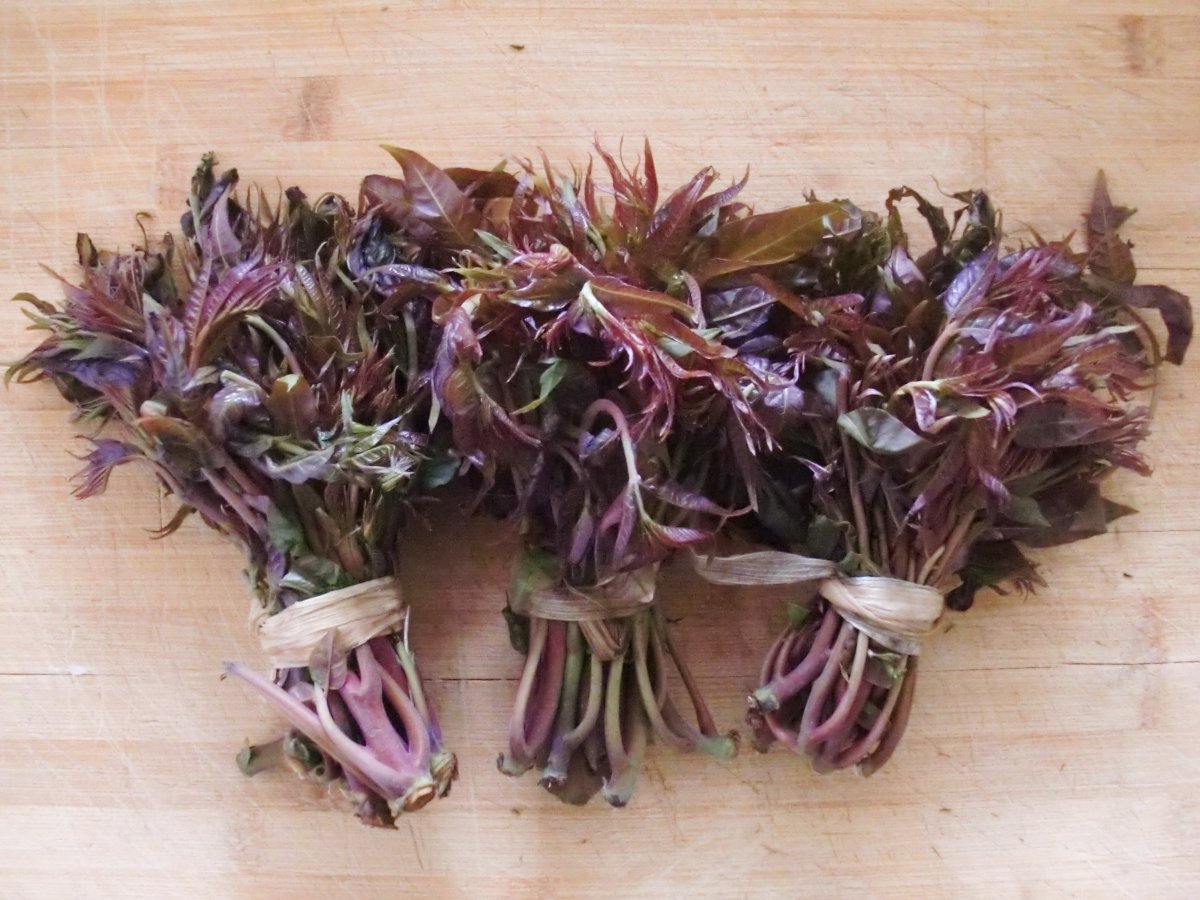
What is it?
Xiangchun refers to the first spring leaves of the Chinese Mahogany tree (Toonasinensis, aka the Chinese Toon) after it awakens from winter dormancy. The tree is the only member of the mahogany family that can survive in temperate regions, and it grows all the way from North Korea to Indonesia, as well as in Nepal and parts of India.
Why you should eat it?
Every 100g of xiangchun has up to 9.8g of protein, 143mg of calcium (verses 113mg in 100g of whole cow’s milk), 115mg of vitamin C (verses 53mg in a 100g orange), and 135mg of phosphorus (you need this, the average human body contains about 700g of it). It also contains iron, beta-carotene, and B-group vitamins. In Chinese medicine, xiangchun has analgesic and anti-inflammatory properties, and is ‘good for men.’
How to eat it?
Our local market folk suggested we fry xiangchun with eggs. If you’d like to do that, follow our recipe for tomatoes fried with egg and simply use xiangchun instead of tomatoes. However, if you want to be eating your xiangchun within 10 minutes of getting home, try this recipe for delicious xiangchun and peanut salad.
Xiangchun and Peanut Salad (香椿拌花生米 xiāngchūn bàn huāshēngmǐ):


Ingredients:
- 3 bunches of xiangchun (We paid RMB 12 per jin. Did we pay too much? Tell us in the comments below)
- 120g of roasted peanuts (熟的花生米 shú de huāshēngmǐ)
- 2 cloves of garlic (大蒜 dàsuàn)
- 2 small red chilies (小米椒 xiǎomǐjiāo)
- 3tbs of aged vinegar (陈醋 chéncù)
- One tbs white sugar (白砂糖 báishā táng)
- ½ tsp of fine sea salt, or ¾ tsp of courser salt (盐 yán)
Method:
1. Bring one medium pot of water to the boil and assemble your ingredients.

2. Remove the woody ends of the xiangchun and wash thoroughly.

3. Once the water is boiling, add the xiangchun and blanch it for 20 seconds, until the leaves have turned green. Remove it from the pot and cool it in cold water (we added ice to speed up the cooling but it’s not necessary).

4. Once cooled, squeeze the xiangchun dry, chop it into 1cm lengths, then chop the garlic and chilies.

5. Combine the vinegar, salt, sugar, chilies, and garlic to a bowl and stir until the salt and sugar are completely dissolved.
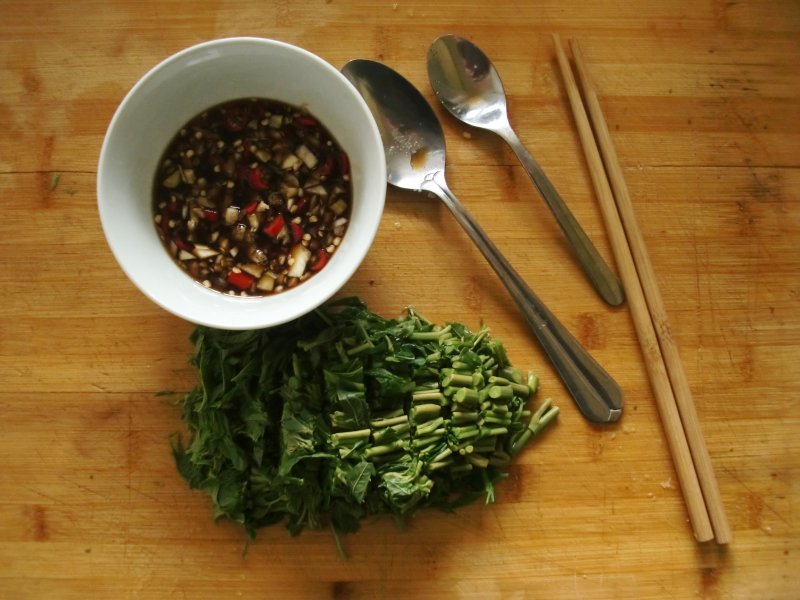
6. Place the peanuts, xiangchun, and dressing in a bowl and mix thoroughly before turning onto a plate to serve.


READ: Springtime Means Spring Rolls: Where to Eat Chunbing in Beijing
Photos: Garth Wilson
Related stories :
Comments
New comments are displayed first.Comments
![]() carmelmoersalim
Submitted by Guest on Tue, 04/25/2017 - 10:16 Permalink
carmelmoersalim
Submitted by Guest on Tue, 04/25/2017 - 10:16 Permalink
Re: Make the Most of Beijing's Seasonal Produce: A Fresh Take...
What a simple yet mouthwatering recipe! One question, is it okay to use canned roasted peanutes (e.g. Mr. Peanut) or do I have to use fresh ones & roast them myself?
Validate your mobile phone number to post comments.

